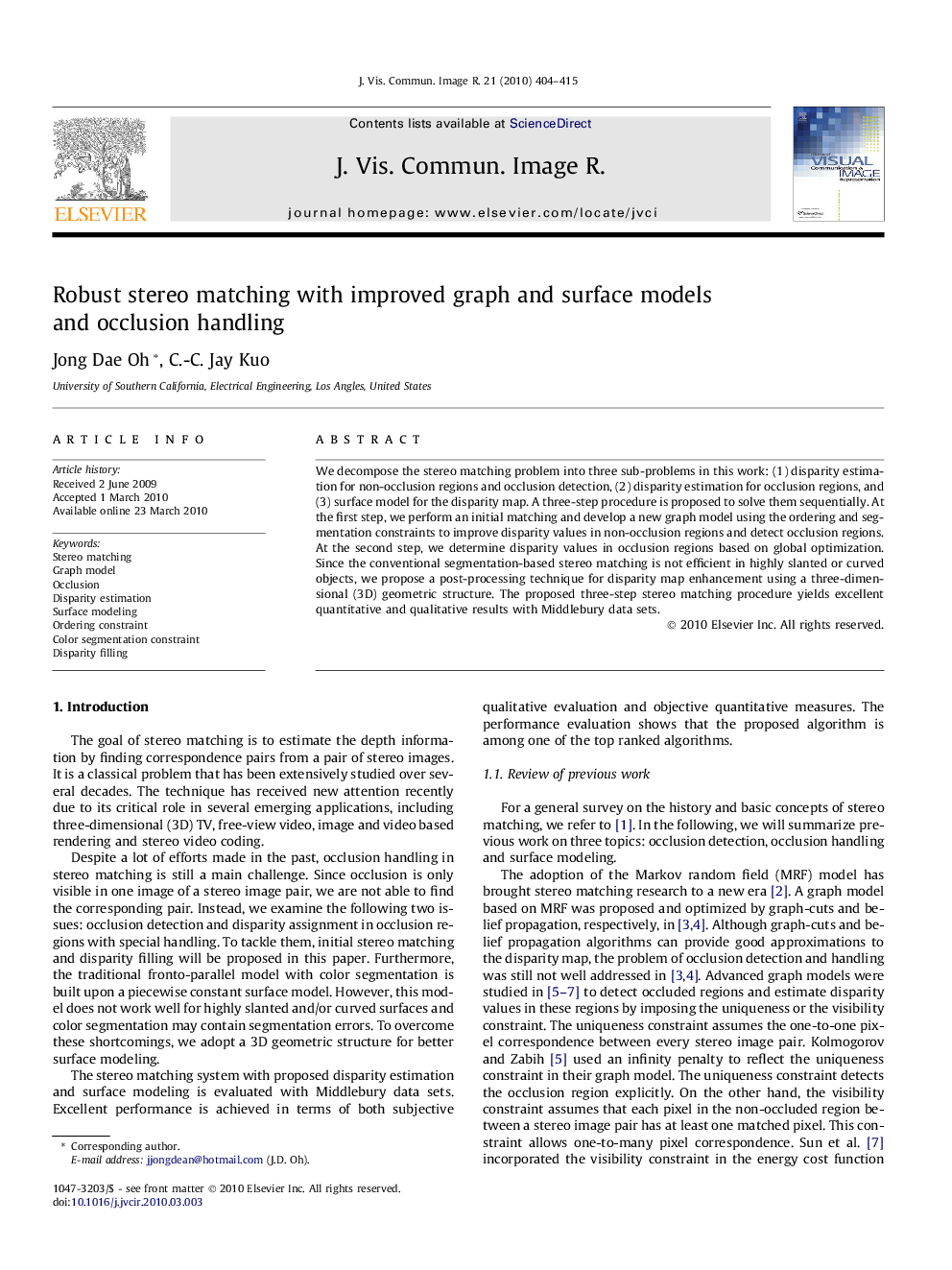| Article ID | Journal | Published Year | Pages | File Type |
|---|---|---|---|---|
| 529330 | Journal of Visual Communication and Image Representation | 2010 | 12 Pages |
We decompose the stereo matching problem into three sub-problems in this work: (1) disparity estimation for non-occlusion regions and occlusion detection, (2) disparity estimation for occlusion regions, and (3) surface model for the disparity map. A three-step procedure is proposed to solve them sequentially. At the first step, we perform an initial matching and develop a new graph model using the ordering and segmentation constraints to improve disparity values in non-occlusion regions and detect occlusion regions. At the second step, we determine disparity values in occlusion regions based on global optimization. Since the conventional segmentation-based stereo matching is not efficient in highly slanted or curved objects, we propose a post-processing technique for disparity map enhancement using a three-dimensional (3D) geometric structure. The proposed three-step stereo matching procedure yields excellent quantitative and qualitative results with Middlebury data sets.
